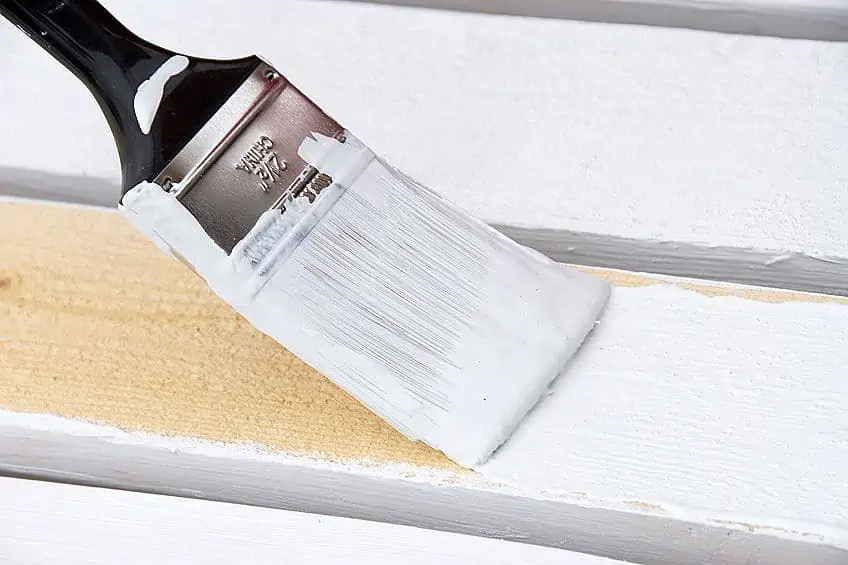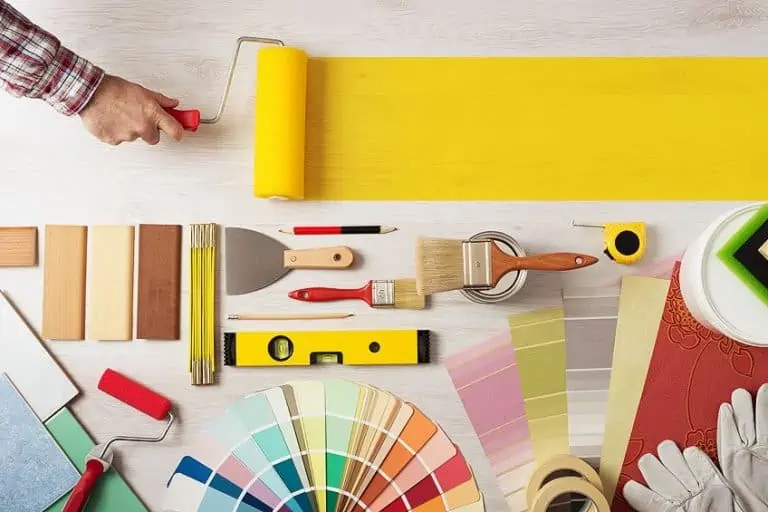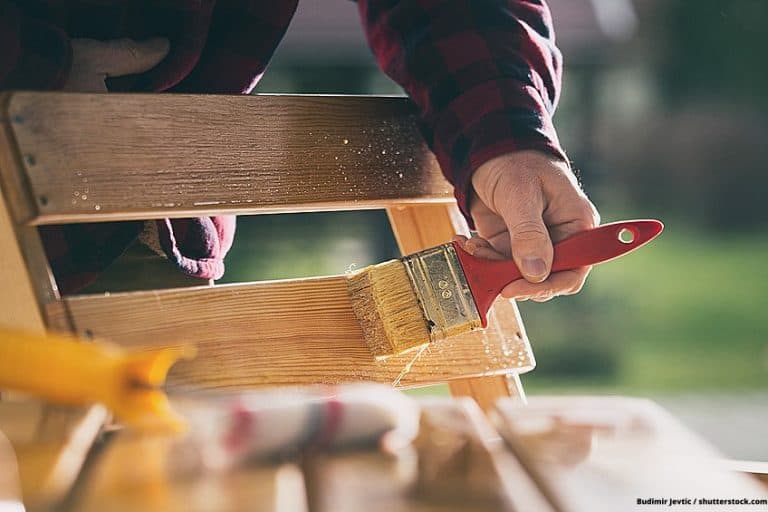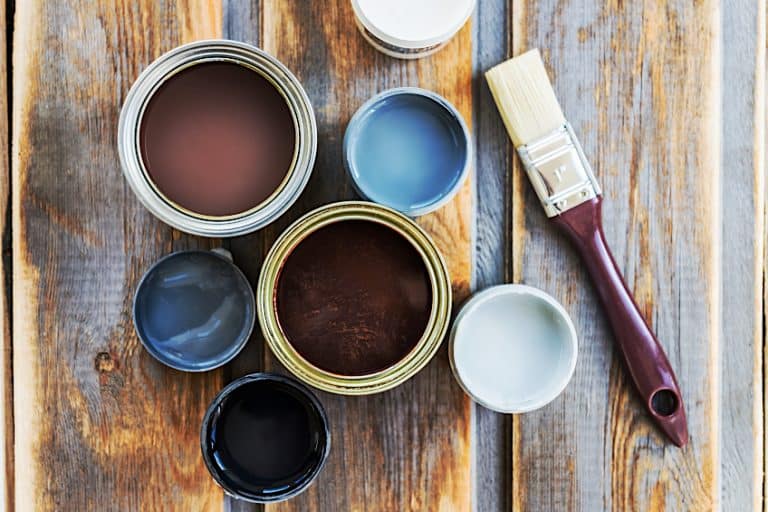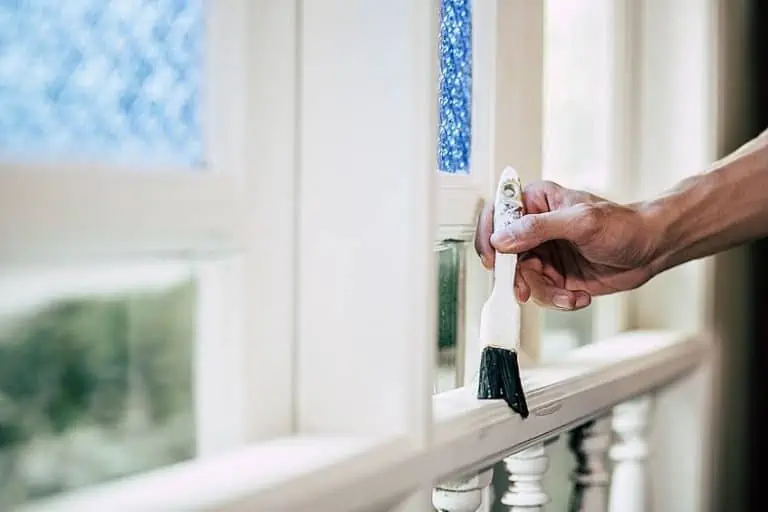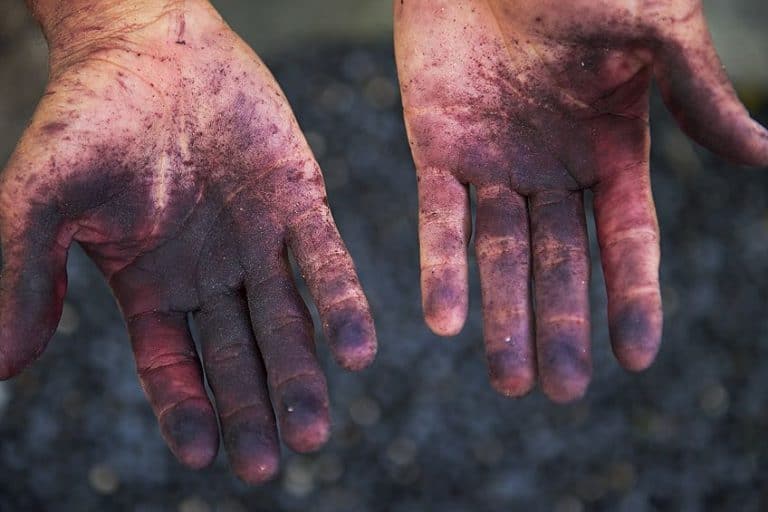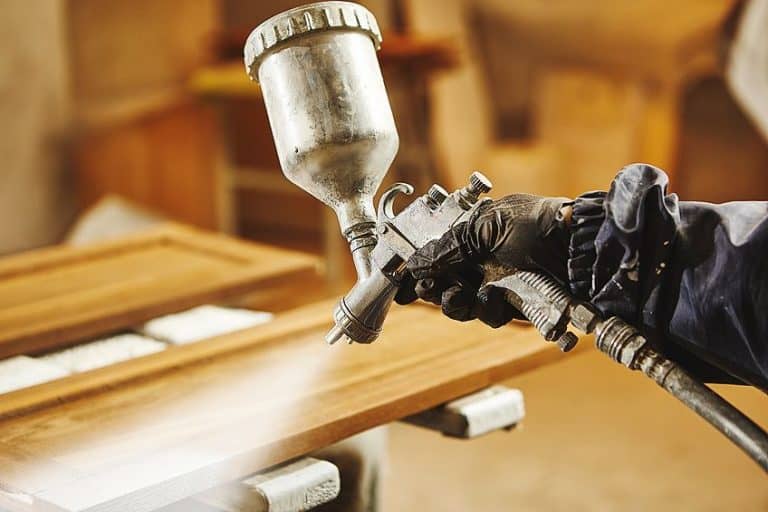How to Paint Pine wood – The Best Method for Painting Pine Wood
When most people think of wooden furniture, they think of dark oak flooring in houses with high ceilings, and oak furniture to match – grandfather clock and all! In a recent turn of events, vintage chique has taken a twist, and now what is popular on-demand is that minimalist, natural feel with indoor plants and lighter colored wooden furniture, usually bamboo, but the look can be modified with the use of pinewood. This makes things far accessible. You do not have to keep pine’s origin color, in fact, pinewood is lightweight and easy to paint, making it easy to work with when painting pine furniture. If you choose the option of painting pinewood, you have the ability to use your creative freedom to change the look and style of your furniture to suit any room. This article will explain in detail, how to paint pinewood, including what to do with unfinished pine, as well as the best paints to use for the task.
What Is the Trouble with Painting Pinewood?
Just because pinewood is an easy timber to find does not make it an easy timer to work with. If you are wondering how to paint pinewood, then you are on the right page. Painted pinewood is one of the most versatile things to add to your home, office space, workshop, cafe, or whatever you need. The origin of this hardwood is in its name, a Pinetree. Even though it is listed as hardwood, it is actually rather soft, making it a tricky wood to work with. But, its softness does make it a perfect candidate for carving intricate details.
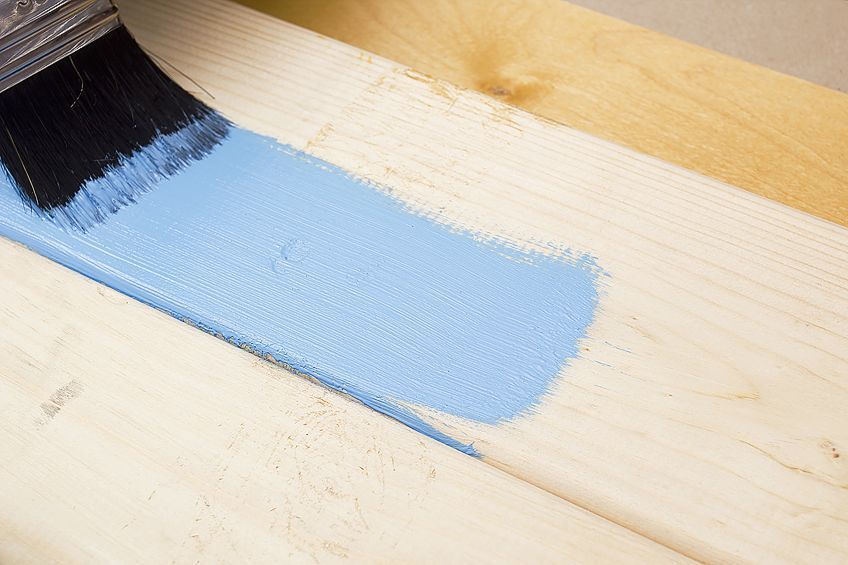
Pinewood is quite knotty, even when cut perfectly using power tools for specific furniture pieces. Because of this, it makes achieving a flush surface top very difficult, and with that, most primers and paints tend to saturate the recesses in the pinewood, which is problematic. This is usually because you are working with unfinished pinewood, but there is a remedy to this dilemma. Painting pinewood, unfinished pinewood to be specific, requires a little more effort, in terms of preparation. The next tidbit is that you need to be aware of which paints are compatible with pinewood because not all are.
It would be mightily annoying if you find your paint will not adhere the way you want it to only because you did not read the label. We will discuss which paints are our favorite for our painted pine projects later on.
Which Paints Work Best When Painting pinewood?
We have mentioned it before, but feel it necessary to mention again, not all paint is compatible with pinewood. It is important to know which ones are good to work with when painting pine furniture. See below our table that describes the different paints and their compatibility.
Paint Type | Can it Paint on Pinewood? | Primer Needed? |
| Latex Paint | ✔ | ✘ |
| Water-based Paints | ✔ | ✔ |
| Acrylic paint | ✔ | ✔ |
| Chalk Paint | ✔ | ✔ |
| Oil-based paint | ✔ | ✘ (Except for some) |
| Enamel paint | ✔ | ✘ |
Instructions for Painting Pinewood
Painting pinewood is not so different from painting any other hardwood. The only thing you must be wary of is that it is knotty in nature, and working with unfinished pine is tricky because the paints do not work with it. For your benefit, we have listed the instructions for the best method forge to paint pinewood, so keep reading.
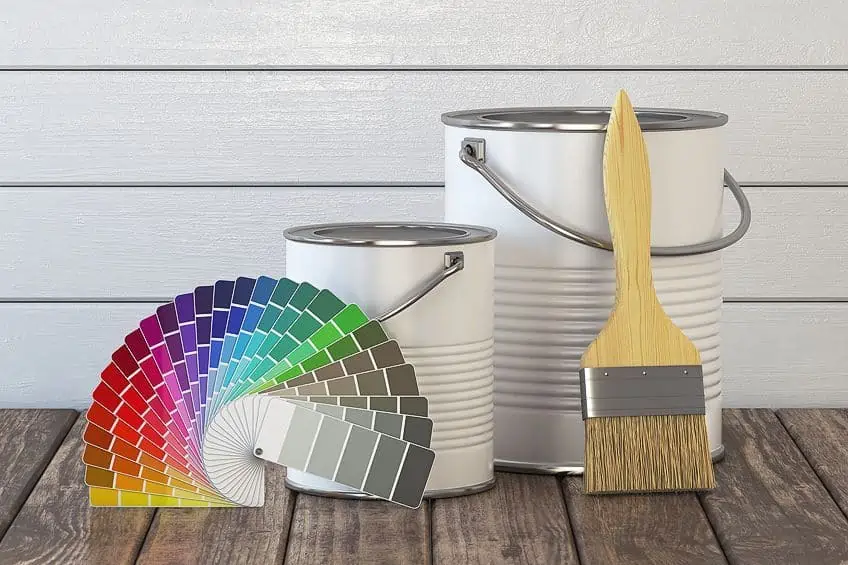
Sand It Down
It is okay, we will totally understand the annoyance you might feel at this first instruction, if not, you are a true work worker with a passion for it burning in your soul. For the rest, sanding might be deemed an intense pain, but it is necessary for paint.
The first step in your painting pine furniture project is the act of sanding it down. This will help to smooth out those knotty bits that make the pinewood surface so uneven.
You can use a power tool sander or old-school sandpaper. We find that the power sander is far more effective with larger areas and sandpaper is best for the smaller areas, but, a combination is often your best. When sanding down the edges of your pinewood, only sandpaper should be used. A power sander will be too out of control for neat edges to be achieved.
Treating the Surface of the Wood
Not only is the knotty nature of pinewood bothersome to paint because it is uneven, but this wood is also famous for excreting a nutrient-rich sap from the wood’s pores that can be used for an array of medicinal and even industrial purposes. You will notice the sap still oozing from the wood if you got yourself some unfinished pine timber.
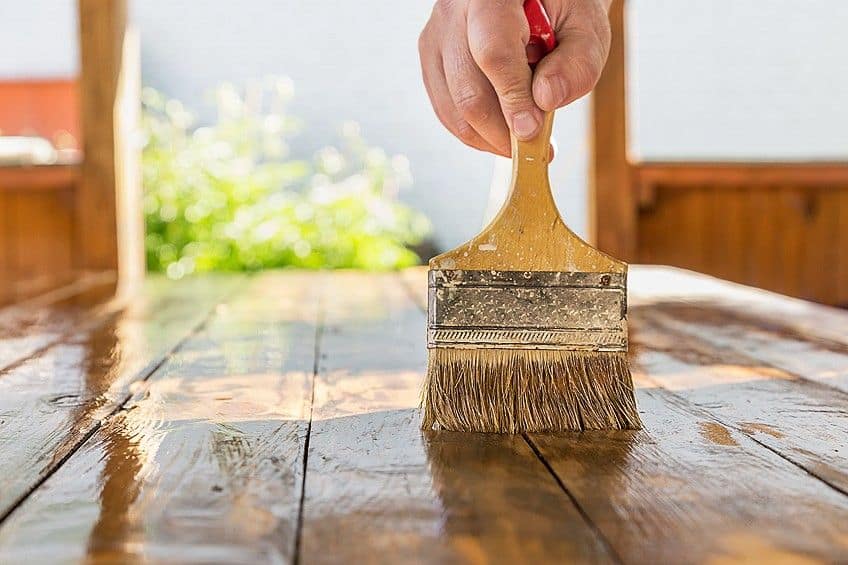
Fortunately, where there is a will, there is a… Well, a way of course! Treating your unfinished pinewood with a light coating of benzol will help mitigate the oozing sap. Once it is evenly distributed all over you can sit back whilst it dries. Remember, when it has dried, wipe down the surface again with a different cloth. Not only will it eradicate the last bits of the sap from the wood, but it will also take away the darker areas where the knobby knots are.
Filling Gaps in the Wood’s Surface
Painting pine furniture is not a quick task. Expect a few parts to the process. The next part is the filling of gaps. This is particularly important for a longer-lasting piece of furniture and offers a smoother, more flush surface when you are done. This can be done with a wood filler, scooping the respective amount for each hole size.
Do not stress too much about adding too much, this can be sanded down later on and it ensures that more is not needed.
If you would like, you can use a paint scraper to apply the wood filler, this will help the smoothing out of the surface and will save you time when sanding. You can also use a spoon in a similar fashion, or even just your fingers. Whatever method suits you best is your best option. When you are satisfied with your newly filled holes, you must wait for the wood filler to set before you can move on with the next step.
Priming Your Wooden Surface
We are aware that we are setting you up for a long and laborious task, but you will appreciate each step of the process when you finish. There will be no sticky sap oozing from the wood ruining clothes that come into contact with it, and no uneven surfaces, giving away the budget of the job. The next step in the process is finally adding the primer. Now, should you use a two in one product, you will not have to do this step because that paint is a two-in-one primer and paint product. Making the initial coating of a primer a little redundant.
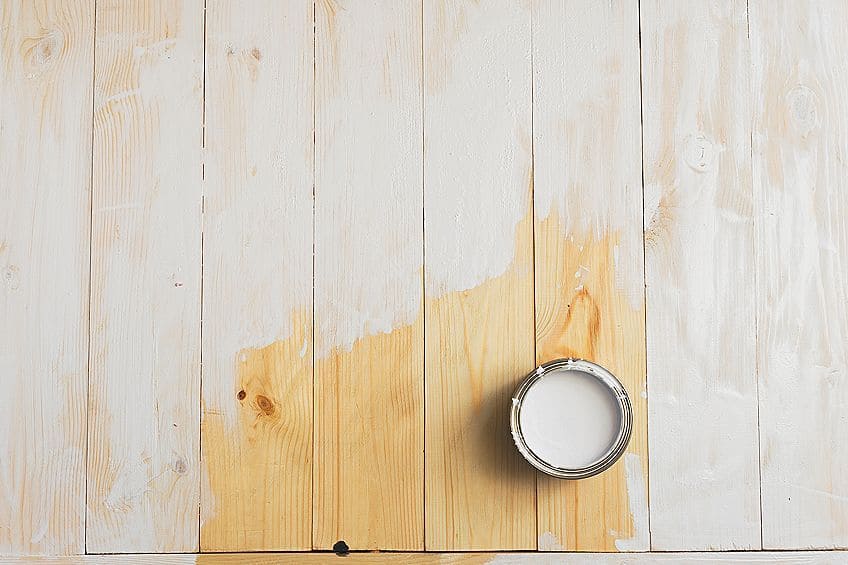
But, if you did not choose that paint for whatever reason, there are some primers that will work perfectly with pinewood. This step is necessary for the adhesion of the paint to the wood’s surface. If you are using a paint that is oil-based, a primer of linseed oil will work beautifully. This will also help the paint retain some of its color vibrancy as it will not get absorbed as much into the pores of the wood.
Your best bet with any product is to read the label thoroughly. There you will find what to expect from any paint or primer product. If you are painting pine furniture, all you need to do is read the back of the product and see if it is compatible.
If you wish, you have the option of voiding the paint job entirely. Instead, you can stain the surface of the wood a slightly darker color.
Painting the Surface
Now that you have prepared your wooden furniture, or a simple surface, with a good wack of wood filler, a rampant sanding, and some primer to go. You can begin with the part that you have been waiting for – the painting! If you feel overwhelmed by the sheer volume of products available on the market, do not worry – we got you. It is important to know what to look out for when you are at the hardware store or paint supply shop. If you are looking for a product that is kind to your wallet, then you want to look out for a latex paint that is water-based.
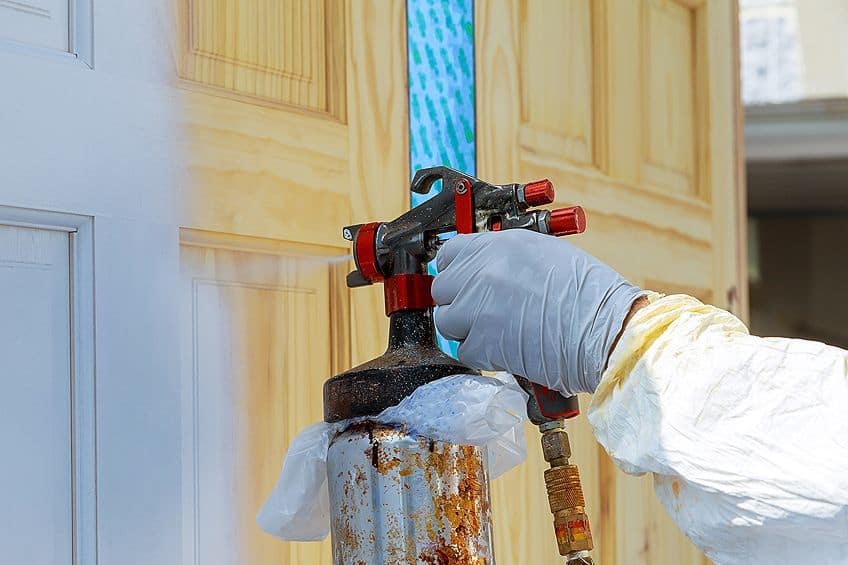
If you choose to forgo the primer then you have to apply at least four coats to the pinewood surface for it to be as vibrant as if there was a primer added. But if a premium finish is your desire, you can always opt for a paint that is oil-based as that will offer a beautiful shiny finish. If you choose a paint that is an aerosol canister, the best way to achieve a smooth result is by standing a certain distance from the wooden surface. Read the instructions of the particular canter you purchased for the specific distance. Make sure you apply the spray paint in long and even strokes going either from left to right, or up and down.
It is recommended to sand down each layer of the paint after it has dried, to rid the surface of any bums formed from painting over dust particles. This will level up the quality of your paint job.
Finishing Off
We totally understand the excitement one feels when a project is finished, painted, and dried. It can be difficult to rein yourself back in, avoid placing the piece of furniture in the intended room and put it to use – or show it off… But, it is unequivocally important to know that pinewood thrives off being coated in a sealer once the paint has dried. Among other reasons, it offers ample protection to the weather conditions if it is an outdoor furniture piece, as well as general wear and tear protection from bumps and scratches, or liquid spills.
Choosing the Right Sealer for the Job
Sealers come in a wide variety of finishes to suit most looks. Not only that but it also adds an element of waterproofing to the pinewood you are painting. This is perfect for painting children’s treehouses that might face some rain from time to time. One coat might not be enough, but two coats of the sealer are perfect.
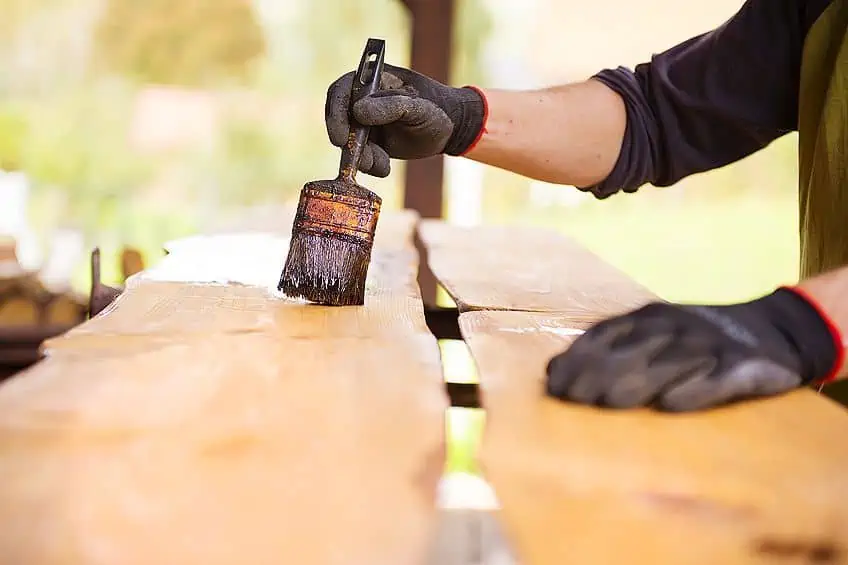
One last word for the wise if you are working with primers, paints, sealers, or whatever, you might want to wear some protective gear in the form of a respiratory mask, an eye mask, and some protective gloves. This helps to keep you from breathing in any of the toxic fumes that might occur from the chemicals in the product’s formula. Your safety is our highest priority.
If you are still with us, we applaud you for your passion for woodwork. The knowledge you have acquired from this tutorial is now ripe and ready in your mind to be manipulated into the style of your choosing. Painting pine furniture will never be a struggle for you in the future.
Frequently asked Questions
Is Pine a Type of Hardwood?
Yes, pinewood is a type of hardwood, but at the same time, it is not as hard as the typical hardwood like oak. It is much softer in nature with knotted effects that are unique to its image. This is not a downside, in fact, it is what makes this wood a prime candidate for whittling or carving fine details.
Is Pine Furniture Paintable?
Of course, you can paint pine furniture. Almost every single type of wood is able to be painted on, some just require a bit more preparation of the surface for the paint to adhere properly. This applies to pinewood as well, a good bout of sanding, priming, and sanding again is enough preparation for the paint to stick to the surface.
Is Pinewood Durable?
Because pinewood is a softer version of hardwood it is not nearly as hardy or durable as a real hardwood like Oak. It is, however, a perfect option for bed frames, floors, picture frames, cabinets, and more.

I have been into woodworking since 2005 and woodturning since 2011. Because of my love for wood and woodworking, I started woodhappen.com to teach other enthusiasts about how to finish and seal wood, the best woodworking tools, the different types of wood, and everything else related to woodworking! Read more about me here.

